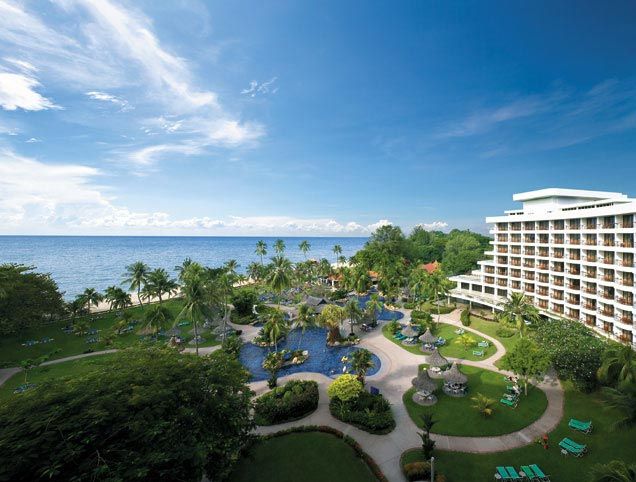Introduction
British, Malays, Indians and Chinese have all contributed to the heady mix of Penang.
The island is very much a cultural crossroads - with night markets full of colour and clamour, sophisticated beachfront hotels, fine old colonial buildings, tantalising food, as well as Muslim, Buddhist, Hindu and Christian places of worship.
Georgetown
The influence of China and Britain are strongly felt in Penang, and no more so than in Georgetown, a faded but incredibly charming colonial outpost with more pre-war houses than any other city in South East Asia.
Named after King George IV, it was a busy port for trade and transport for many years, but today is a far quieter place, where bicycle rickshaws trundle slowly along streets lined with incense-filled temples and colonial buildings.
Temples
There are a number of interesting temples and churches scattered around the Georgetown area of Penang.
Along the so-called 'Street of Harmony' and nearby are St George's Church, the first Anglican church in South East Asia; the Kapitan Keling Mosque, founded by Indian Muslims; and the Hindu Sri Maha Mariamman Temple, decorated with carvings of deities and sacred animals.
Chinese religious influences, meanwhile, are seen at the Kuan Yin Temple (Goddess of Mercy Temple), filled with the smell of sandalwood incense, and noted for a steep roof supported by dragon-entwined pillars.
Fort Cornwallis
Only the outer walls now remain of Fort Cornwallis, a once-strategic stronghold that was built on the site that the British fleet, under Captain Francis Light, first dropped anchor in Penang, in 1786.
Nevertheless, a stroll around the star-shaped fort gives a sense of its former importance.
Batu Ferringhi
Batu Ferringhi, the main beach area of Penang has transformed from a hippy hangout to a stretch defined by sophisticated resorts. It's an easy 30-minute drive from Georgetown and many of the hotels offer a complimentary shuttle service between the two.
Parts of Batu Ferringhi are somewhat over-developed, but there are still some great sunbathing spots to be found in less touristy areas.
The night market alongside the beach road embraces the beachside busyness, with souvenir and food stalls catering to all tastes and budgets.
Penang Hill
A recently re-opened funicular railway leads to the top of Penang Hill, Malaysia's first colonial hill station.
Great views can be had of Georgetown and the surrounding area from the peak, and pretty gardens, a temple and a few restaurants can also be visited before returning to the bottom - either on the funicular or by foot along a trail that winds through Penang's last remaining rainforest.








